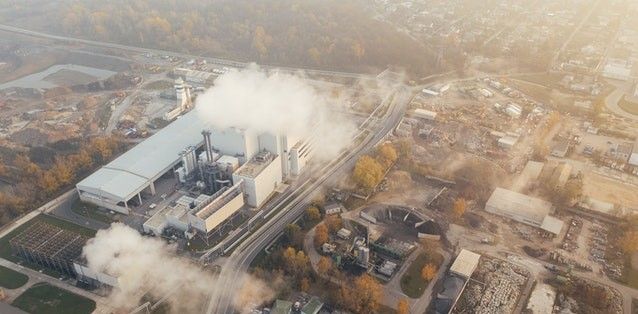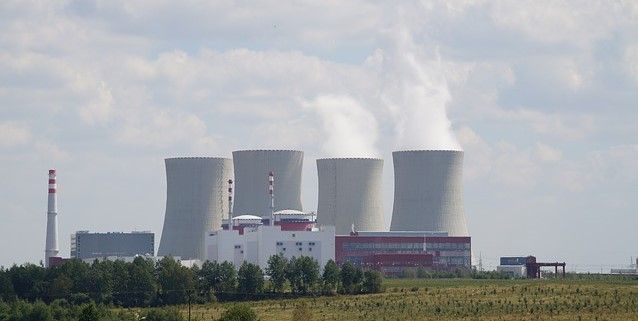For a country the size of Panama and a population of less than 11 million people, the Czech Republic has batted above its weight for a long time. Most people can place this small country on a map, the economy is one of the best performing of all the former-Soviet satellites, and its national sports teams (particularly tennis and ice hockey) are at a global standard.
The same can be said for its chemical industry, which while not massive, has a healthy and robust output.
This is the second part of a two-part overview of the chemicals industry in the Czech Republic. To learn more about this topic read, A Closer Look at the Czech Chemical Industry – Part 1

The Czech Chemical Industry - Future
Investment has been steady, reaching €1.98 billion in 2018 (of which about 60% was financed by Czech companies) and there is close collaboration between the chemical industry and the numerous technical universities around the country.
Unfortunately, CEFIC reports that chemical imports are growing and exceed exports by more than €13 billion each year – a trade gap that is growing rapidly.
All the same, opportunities do exist for increased production of high-value-added products, such as bioplastics, polymers, and epoxy resins. Polyethylene, polybutadiene, and ethylbenzene capacity could also be expanded if market conditions allow.
However, like all economies, the Czech Republic is attempting to undergo major adjustments to face the challenge of climate change. This has been largely successful, as a November 2020 report by industry consultants at McKinsey and Sons states, “The Czech Republic has undergone a significant transformation of its economy in the last 30 years, reducing its global greenhouse gas (GHG) emissions from 199 MtCO2e in 1990 to 129 MtCO2e in 2017.”
Although there is still some way to go, with the report noting that, “Despite this drop, the country was the fourth-largest GHG emitter in the EU on a per capita basis.”

With industry being the country’s second largest producer of GHG emissions (after electricity and heat generation) the chemical industry is at the centre of efforts to reduce environmental impact. Given the Czech Republic’s EU membership the most likely route for the country to follow is the EU Green Deal which (if ratified) will aim for GHG emission reductions of, “at least 55 percent by 2030 versus 1990 levels, and to net-zero by 2050.”
Emissions trading schemes and fluctuating fossil fuel prices have already reduced the country’s dependency on gas and coal, however the report estimates that, “achieving the 55 percent reduction target by 2030 would require additional investments of CZK 500 billion (EUR 18 billion, corresponding to an estimated 1 percent of GDP) over this decade.” Although most of these investments would “pay for themselves (or generate a profit) as new technologies that lower business operating costs are adopted.”
However, reaching carbon-neutrality would likely require additional investment of CZK 4 trillion (€150 billion, or 4 percent of GDP from 2031 to 2050), including the planned completion of two new nuclear power plants.

Further investments in the chemical industry have developed a hugely successful nanotechnology industry stemming from government support (both financial and legal) and the high quality of technical universities. Consequently, the Czech Republic has a strong base in nanotechnology with several ‘nanotech hubs’ including the Prague science and technology cluster (known as STAR).
To learn more about this leading edge in the global production of nanomaterials read: Czech Nanotechnology Proven as World Class Part 1: Research & Czech Nanotechnology Proven as World Class Part 2: Industry
This arrangement has enabled numerous nanotechnology start-ups, while other chemical companies are diversifying as they see demand for nanomaterials grow.
One such company is AG CHEMI GROUP, a Prague-based supplier of industrial raw materials since 1994.
During those 25 years, the company has formed a number of partnerships with major manufacturers of detergents, ceramics, biodiesel, plastics, chemicals, and fertilizers, not only in Europe but all around the world, growing steadily to achieve an annual turnover of more than €20 million.
Recently, the company (who manage this webpage) has developed suitable solutions for improving chemical raw materials using nanotechnologies.
As the company’s CEO and founder Igor Sevcenko explains, “Together with leading European research institutes and in cooperation with nanomaterial manufacturers, we have developed a technology that is currently undergoing a patenting process. At the same time, two pilot production lines are being prepared, focusing on surface and volume structuring of products at the nano level. The first line will be operational by the end of 2020, and we plan to launch the next one during 2021.”

It is SMEs, like AG CHEMI GROUP, that form the backbone of the Czech chemical industry. While their small size does impact economies of scale, it also allows the industry to quickly adapt, where entrepreneurship can combine with technical know-how to expand portfolios.
Two key areas of the Czech chemical industry, the plastics and the automobile sectors, are predicted for significant growth over the next few decades, while the newly formed nanotechnology industry has an equally positive outlook.
With the global chemical industry becoming increasingly specialized, with more niche products, high-end chemicals, and made to order chemistry, the Czech Republic is well set for a bright future.
To learn about investing in Czech chemical companies, nanotechnology and about purchasing company bonds visit: AG CHEMI GROUP.
Photo credit: ivabalk from Pixabay, Karsten W. Rohrbach from FreeImages, ivabalk from Pixabay, Marcin Jozwiak from Pexels, Marcin Jozwiak on Unsplash, Wikipedia, Anthony Beck from Pexels, ivabalk from Pixabay, & Ridwan Meah on Unsplash